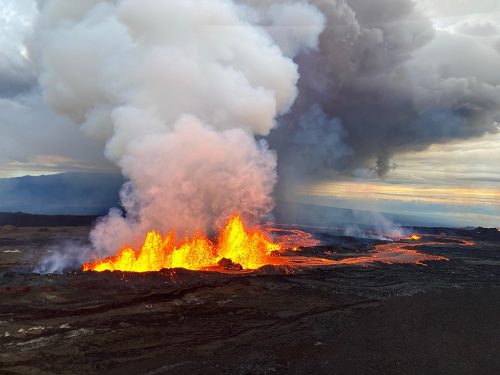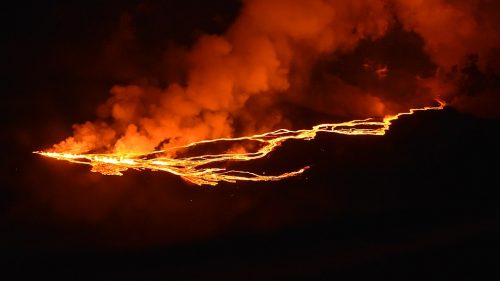Two large, powerful volcanoes have recently erupted, releasing rivers of lava and clouds of toxic gas. On Sunday, Indonesia’s Mount Semeru erupted, forcing thousands from their homes. Last week, Hawaii’s Mauna Loa erupted. Both eruptions are still active.
Mount Semeru
Indonesia’s Mount Semeru erupted on Sunday. The eruption shot clouds of gas into the sky and sent rivers of lava flowing down the sides of the volcano. Over 2,000 people who lived in villages nearby were evacuated from the area.
😕
This image has not been loaded because of your cookie choices. To view the content, you can accept 'Non-necessary' cookies.
Indonesia’s Mount Semeru erupted on Sunday. The eruption shot clouds of gas into the sky and sent rivers of lava flowing down the sides of the volcano. Over 2,000 people who lived in villages nearby were evacuated from the area.
Mount Semeru is an active volcano on Java, the largest island in the island nation of Indonesia. Semeru is Java’s tallest mountain. It has erupted at least 55 times in the last 200 years. A deadly eruption last year left over 50 people dead.
The eruption was triggered after monsoon rains softened the “dome” that covered the volcano’s crater. When the dome collapsed, a cloud of ash and gas was sent .9 miles (1.5 kilometers) into the sky. In some nearby villages, houses were buried up to their rooftops in mud made of ash and other debris from the volcano.
😕
This image has not been loaded because of your cookie choices. To view the content, you can accept 'Non-necessary' cookies.
The eruption was triggered after monsoon rains softened the “dome” that covered the volcano’s crater. In some nearby villages, houses were buried up to their rooftops in mud made of ash and other debris from the volcano (above).
Later on Sunday, the volcano became even more active. That led the government to evacuate people from a wider area. By Monday, the volcano appeared to be calming down.
Mauna Loa
On November 27, Hawaii’s Mauna Loa volcano began erupting for the first time in 38 years. Mauna Loa shot lava nearly 55 yards (50 meters) into the air, and sent rivers of lava running down its side. Unlike Mount Semeru, Mauna Loa’s lava didn’t burst from its crater, but from a crack in the side of the volcano.
Mauna Loa is the world’s biggest active volcano. It’s located on Hawaii’s largest island, often called the “Big Island”.

(Source: M. Patrick/USGS [Public domain], via Wikimedia Commons.)
Experts say there’s currently no real danger from the Mauna Loa eruption. The lava is flowing down toward the Big Island’s main highway. The lava could cause problems if it crossed the highway. But the lava is flowing more slowly now, and may not reach that far.
Mauna Loa is also putting out a lot of toxic gas. Though the gas is dangerous to breathe, most people live far enough away that it hasn’t been a problem. The eruption has drawn many tourists to the area. The government has warned these visitors to stay away from the volcano and its toxic gases.

(Source: Civil Air Patrol [Public domain], via Wikimedia Commons.)
In the past, Mauna Loa erupted about once every seven years. But since 1984 there have been no eruptions. That hasn’t stopped scientists from studying it. Mauna Loa has more special measuring devices on it than most other volcanoes. Now many researchers are eager to learn as much as they can while Mauna Loa is erupting.
But the eruption has caused a problem with other scientific research. For 60 years, the nearby Mauna Loa Observatory has collected information about carbon dioxide in the atmosphere. The information has played a huge role in learning about climate change.
The eruption took out power to the observatory, stopping the recording of information. Researchers are hoping to move the measuring devices and begin recording again quickly.
